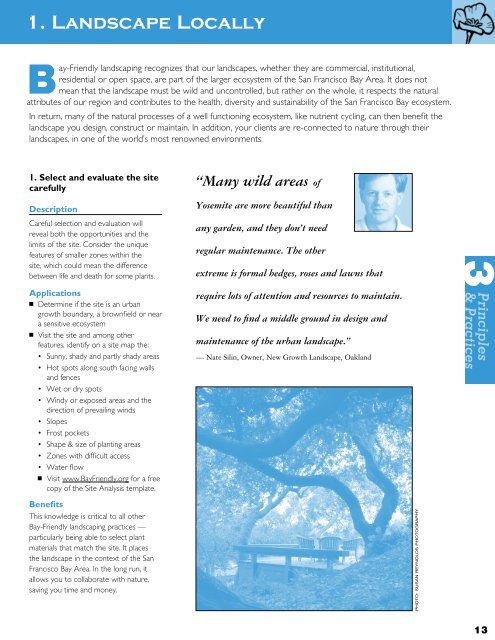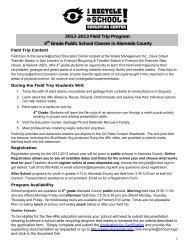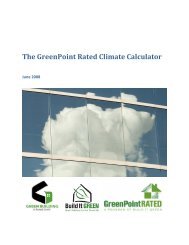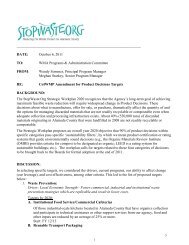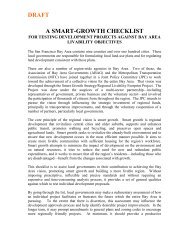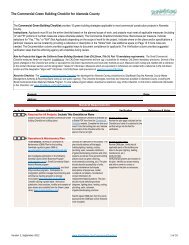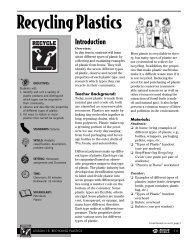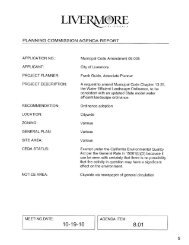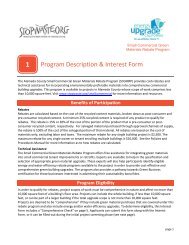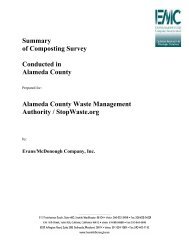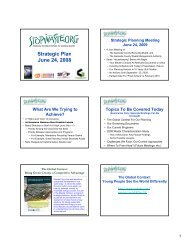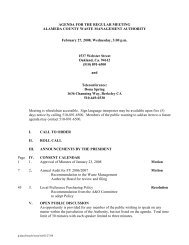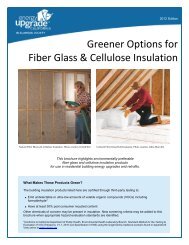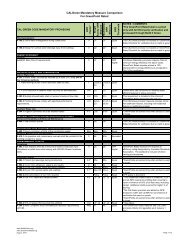Bay-Friendly Landscaping Principles and Practices - StopWaste.org
Bay-Friendly Landscaping Principles and Practices - StopWaste.org
Bay-Friendly Landscaping Principles and Practices - StopWaste.org
You also want an ePaper? Increase the reach of your titles
YUMPU automatically turns print PDFs into web optimized ePapers that Google loves.
1. L<strong>and</strong>scape Locally<br />
<strong>Bay</strong>-<strong>Friendly</strong> l<strong>and</strong>scaping recognizes that our l<strong>and</strong>scapes, whether they are commercial, institutional,<br />
residential or open space, are part of the larger ecosystem of the San Francisco <strong>Bay</strong> Area. It does not<br />
mean that the l<strong>and</strong>scape must be wild <strong>and</strong> uncontrolled, but rather on the whole, it respects the natural<br />
attributes of our region <strong>and</strong> contributes to the health, diversity <strong>and</strong> sustainability of the San Francisco <strong>Bay</strong> ecosystem.<br />
In return, many of the natural processes of a well functioning ecosystem, like nutrient cycling, can then benefit the<br />
l<strong>and</strong>scape you design, construct or maintain. In addition, your clients are re-connected to nature through their<br />
l<strong>and</strong>scapes, in one of the world’s most renowned environments.<br />
1. Select <strong>and</strong> evaluate the site<br />
carefully<br />
Description<br />
Careful selection <strong>and</strong> evaluation will<br />
reveal both the opportunities <strong>and</strong> the<br />
limits of the site. Consider the unique<br />
features of smaller zones within the<br />
site, which could mean the difference<br />
between life <strong>and</strong> death for some plants.<br />
Applications<br />
n Determine if the site is an urban<br />
growth boundary, a brownfield or near<br />
a sensitive ecosystem<br />
n Visit the site <strong>and</strong> among other<br />
features, identify on a site map the:<br />
• Sunny, shady <strong>and</strong> partly shady areas<br />
• Hot spots along south facing walls<br />
<strong>and</strong> fences<br />
• Wet or dry spots<br />
• Windy or exposed areas <strong>and</strong> the<br />
direction of prevailing winds<br />
• Slopes<br />
• Frost pockets<br />
• Shape & size of planting areas<br />
• Zones with difficult access<br />
• Water flow<br />
n Visit www.<strong>Bay</strong><strong>Friendly</strong>.<strong>org</strong> for a free<br />
copy of the Site Analysis template.<br />
Benefits<br />
This knowledge is critical to all other<br />
<strong>Bay</strong>-<strong>Friendly</strong> l<strong>and</strong>scaping practices —<br />
particularly being able to select plant<br />
materials that match the site. It places<br />
the l<strong>and</strong>scape in the context of the San<br />
Francisco <strong>Bay</strong> Area. In the long run, it<br />
allows you to collaborate with nature,<br />
saving you time <strong>and</strong> money.<br />
“Many wild areas of<br />
Yosemite are more beautiful than<br />
any garden, <strong>and</strong> they don’t need<br />
regular maintenance. The other<br />
extreme is formal hedges, roses <strong>and</strong> lawns that<br />
require lots of attention <strong>and</strong> resources to maintain.<br />
We need to find a middle ground in design <strong>and</strong><br />
maintenance of the urban l<strong>and</strong>scape.”<br />
— Nate Silin, Owner, New Growth L<strong>and</strong>scape, Oakl<strong>and</strong><br />
photo: Susan Reynolds photography<br />
3 <strong>Principles</strong><br />
& <strong>Practices</strong><br />
13


